Table of Contents
1. Emotional Intelligence (“EQ”) Defined
Emotional Intelligence: The ability to sense, understand and effectively apply the power of emotions to facilitate high levels of productivity, communication, and collaboration.
Two Dimensions of Emotional Intelligence: Intrapersonal EQ v. Interpersonal EQ
Emotional intelligence is divided into two subcategories: Intrapersonal EQ and Interpersonal EQ.
Intrapersonal EQ is a combined measure of your self-awareness, self-regulation, and motivation. It’s the ability to effectively manage your internal emotional state.
- Self-Awareness: The ability to recognize your emotions, and to understand how they affect you and other people.
- Self-Regulation: The ability to sense and control your emotions, and to apply judgment before acting on your feelings.
- Motivation: The ability to pursue your goals with persistence; the level of energy you bring to your work.
Interpersonal EQ is a combined measure of your empathy and social skills. It’s the ability to effectively manage your communications, relationships, and interactions with others.
- Empathy: The ability to read, understand, and care for the emotions of other people.
- Social Skills: The ability to communicate effectively and build positive relationships with others.
How is Emotional Intelligence Measured?
The unit of measurement for emotional intelligence is the Emotional Quotient (“EQ“)*.
The scale of measurement for emotional intelligence varies depending on the assessment used. Our Emotional Quotient™ assessment is based on the Goleman Model of Emotional Intelligence and generates scores from 0 – 10.0.

t-selling author of Emotional Intelligence: Why It Can Matter More Than IQ and several related books.
*Note: Your Emotional Quotient (“EQ“) should not be confused with your Intelligence Quotient (“IQ“). Whereas IQ measures your cognitive, reasoning, and problem-solving abilities, EQ measures your ability to effectively manage your feelings and those of others. These are two completely separate, distinct things.
What is the Average EQ Score?
For our Goleman EQ assessment, the population mean score is 7.5. Furthermore, 68% of the population falls in the range from 6.6 – 8.4.
2. The Science of Emotional Intelligence
Emotional intelligence is an objective, measurable psychological trait.
Psychologists and neuroscientists have worked hard to understand its effects on our lives. Perhaps unsurprisingly, the data shows emotional intelligence plays a central role in decision-making. Thus it often spells the difference between success and failure in our work and relationships.
Studies Show EQ is Predictive of Career and Relationship Success
Substantial research shows us emotional intelligence is highly predictive of career success and the development of positive, healthy relationships.
If you’d like to explore some of this research:
- Yale Center for Emotional Intelligence – deep repository of information on emotional intelligence compiled by Yale University professors and other qualified professionals.
- Emotional Intelligence Meets Traditional Standards for Intelligence – research paper published by John Mayer, David Caruso, and Peter Salovey in 2000. It confirms that emotional intelligence meets the many criteria required to be considered scientifically legitimate*, plus much more.
- Emotional Intelligence: Implications for Personal, Social, Academic, and Workplace Success – research paper published by Marc Brackett, Susan Rivers, and Peter Salovey in 2011. The title of the paper pretty much sums it up: EQ is a major success factor in every area of our lives.
- The Role and Importance of Emotional Intelligence in Knowledge Management – research paper published by Svetlana Lazovic for the 2012 Management, Knowledge, and Learning international conference. Very insightful discussion of the importance of EQ in the workplace, with a focus on how knowledge transfers throughout an organization.
- The Dark Side of Emotional Intelligence – thought-provoking blog article from The Atlantic that provides a healthy discussion of the pros and cons of emotional intelligence, and which also acknowledges the increasing importance of EQ with job complexity.
*The three standard criteria for an intelligence are conceptual, correlational, and developmental. Conceptual criteria holds that intelligence must reflect mental performance, rather than simply preferred ways of behaving or a person’s self-esteem. Correlational criteria is an empirical standard that specifies an intelligent must describe a set of abilities similar to, but distinct from, existing definitions of intelligence. Developmental criteria states that the intelligence develops with age and experience.
MRI & EEG Have Advanced Our Understanding of the Brain
Tools like Magnetic Resonance Imaging (MRI) and electroencephalography (EEG) have also advanced our understanding of the human brain. This includes having advanced our understanding of how emotion affects us.
Scientists induce their subjects to experience a wide variety of emotions, which are then measured in real time. Brain scans reveal where brain activity occurs, and with how much intensity.
The resulting data tells us exactly where emotions originate in the brain, what other brain regions are affected by those emotions, and how information processing and decision-making are affected.
To review this research in more detail:
- Emotional Intelligence: Issues and Common Misunderstandings – research paper published by Robert Emmerling and Daniel Goleman in 2003. Highlights findings of neuroscientific research on emotional intelligence and “…evidence for people’s ability to improve their social and emotional competence with sustained effort and a systematic program.“
- Distributed neural system for emotional intelligence revealed by lesion mapping – research paper published by Aron Barbey, Roberto Colom, and Jordan Grafman in 2012. Their “…results support an integrative framework for understanding the architecture of executive, social and emotional processes.”
- Emotional Intelligence: Advocating for the Softer Side of Leadership – downloadable research paper published by Richard Aldridge and Deborah Hanagan of the Department of National Security and Strategy in 2013. They found “the latest advances in neuroscience…establish a primal, biological link between emotions and leadership, showing how emotional skills are equally, if not more, important than cognitive skills.“
Another conclusion from Aldridge and Hanagan’s research paper:
“Successfully leading in dynamic, complex environments, making wise decisions while facing tremendous resource constraints, avoiding moral and ethical lapses, preventing failures in leadership, building healthy relationships, and fostering resiliency across the workforce is less about the hard skills of cognitive intelligence and more about the soft skills of emotional intelligence.”
Scientific Implications: Emotion is at Your Core
Every time another paper is published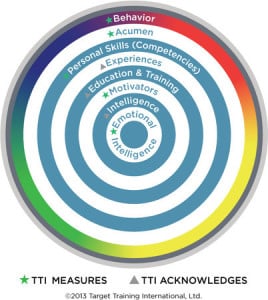
These conclusions come from our current understanding that emotion is truly at the core of all of us. It comes before, and subsequently affects, nearly all other elements of our thinking and decision-making abilities.
Thus it “trumps” other personality traits, skill factors, and behavioral traits when we talk about critical thought, decision-making, and observable behavior.
This is reflected in TTI Success Insights’ performance model shown here, which places EQ at the center. This trademarked performance model is called the Science of Self™ and has been under development for the past thirty-five years, with the help of a small army of PhD psychologists and researchers.
You will notice Emotional Intelligence (EQ) comes before Intelligence (IQ) – more on this later.
You will also notice Behavior is on the outer edge, reflecting that it’s most observable – but also most subject to influence by the other factors. If you’ve ever taken a DISC behavioral assessment, or participated in a DISC workshop, and were left with the feeling it didn’t make a strong or lasting impact, now you know why: even a well-designed top floor will crumble if built on a weak foundation.
Hence the importance of emotional intelligence, because it is the strong (or weak) foundation upon which your thoughts, decisions, and actions are constructed.
3. Three Ways Emotions Govern Our Lives
Scientific research has demonstrated our emotions, and the emotions of others, have constant and powerful effects on us. They silently guide our thoughts, decisions, and actions – nearly every minute of every day (perhaps the only exception to this is the sociopath, who is void of true emotion).
Let’s review three specific ways emotions govern and control you 24/7: instant impressions, stress v. relaxation responses, and the infamous “5-1 rule.”
A. Instant Impressions
Science shows most of our emotions form almost immediately in response to stimuli (split second or less). And it turns out, the effect of these initial impressions is highly influential in decision-making.
Our initial attraction or repulsion to something predicts our final decision with surprising accuracy. This is because the areas of your brain responsible for emotion, decision-making, and taking action are closely interconnected.
It is also because the more rational, “thinking” part of your brain (the neocortex) tires easily. When the neocortex tires, it tends to “trust” the initial impressions formed by the limbic system (the part of your brain responsible for emotion).
For an incredible discussion of emotion and cognition, read Nobel Prize winner Daniel Kahneman‘s Thinking, Fast and Slow
. Kahneman refers to the emotional brain (and its immediate reactions to stimuli) as System 1, and the logical brain (dominated by the neocortex) as System 2.
As Jim Holt of the New York Times puts it in a November 25, 2011 article:
“System 2…is our slow, deliberate, analytical and consciously effortful mode of reasoning about the world. System 1, by contrast, is our fast, automatic, intuitive, and largely unconscious mode. System 1 proposes, System 2 disposes. So System 2 would seem to be the boss, right? In principle, yes. But System 2…tires easily (and) is content to accept the easy but unreliable story about the world that System 1 feeds to it. ‘Although System 2 believes itself to be where the action is,’ Kahneman writes, ‘the automatic System 1 is the hero of this book.‘“
Thinking, Fast and Slow is admittedly a dense read, but it’s also the culmination of the life’s work of a Nobel Prize winning psychologist, who has revolutionized nearly all fields of science: psychology, behavioral economics (for which he won his Noble Prize), statistics, and beyond. And it quite directly supports the case for emotional intelligence.
B. Stress v. Relaxation Responses
The physiological differences between stress and relaxation are enormous. In layman’s terms:
- When you are stressed (high emotion) you lose access to your higher mental faculties, and bypass your neocortex.
- When you are relaxed (low emotion) you have full access to your higher mental faculties, including your neocortex.
Physiological characteristics of the stress response:
- Unable to access higher mental faculties
- Release of adrenaline, cortisol, and epinephrine (stress hormones)
- Increased blood pressure & heart rate
- Raised blood sugar, narrowing of arteries
- Nervousness, shakiness, sweaty/cold palms
- Formation of ulcers
- Dilated pupils
- Muscle tension
Physiological characteristics of the relaxation response:
- Ability to access higher mental faculties
- Higher EQ, better decision-making
- Decreased blood pressure
- Relaxed mind and muscles
- Improved immune function
- Higher levels of creativity
- Improved digestion
Remember, these are physical and chemical effects. They are unavoidable.
When y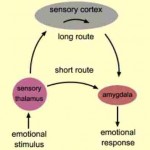
Thus stress wreaks havoc on good decision-making, since the neocortex is where your higher mental faculties are located. Instead of thinking, the brain starts reacting.
Many people understand this intuitively, but not everyone has taken the time to measure and lower their stress levels, or to measure and improve their EQ. These are desirable steps, though, for anyone wishing to regain control of the “train tracks” of their mind.
C. Fact or Fiction: The 5-1 Rule
There is a concept in positive psychology called the Critical Positivity Ratio, also known as the Losada Ratio, which has attempted to show successful people, successful marriages, and successful business teams maintain a “positive ratio” of somewhere between 2.9-5.6 positive emotions for every 1 negative emotion.
The rule of thumb, as it goes, is that you should try to maintain ~5 positive emotions for every 1 “negative” emotion in a given relationship, and even for your own thoughts. This idea was originally proposed by psychologists Marcial Losada and Barbara Frederickson, and has been further supported by psychologist John Gottman.
However, the math behind the Critical Positivity Ratio has been largely debunked and discredited. This article does a good job highlighting both sides of the debate.
At the very least, we need more science to make an accurate determination. Sure, it may seem intuitive enough that too much negativity is bad, and staying mostly positive is good. Too much negativity can certainly destroy productivity, progress, and relationships of all kinds.
But with the science debunked, the case for a “magic ratio” for positivity is all but clear.
Importantly, negative emotions do play an important role in our lives. As this 2013 article from Scientific American points out:
“…experiencing and accepting (negative) emotions are vital to our mental health. Attempting to suppress thoughts can backfire and even diminish our sense of contentment.”
And, “Negative emotions also most likely aid in our survival. Bad feelings can be vital clues that a health issue, relationship or other important matter needs attention.”
Negative emotions protect us from making bad decisions, and they provide important context for the meaning of experience positive emotions.
This brings us to a key point: Emotional intelligence is not about being positive or happy all the time.
Quite to the contrary, the emotionally intelligent person has a strong awareness and understanding of all their emotions – positive and negative. They are capable of tuning into, and heeding the warnings of, both positive and negative emotions when they surface.
Looking back to the image in the previous section, recall it is high emotion – not “negative” emotion – that triggers your mental/emotional train tracks to switch over. Anger and love, fear and excitement, etc. can all equally cause your neocortex to be bypassed and negatively impact your decision-making.
This is critical for understanding emotional intelligence properly.
In my humble opinion, psychologists, coaches, consultants, and regular folks hanging onto outdated, brute-force positive thinking-only methodologies, must instead move towards the more robust model of emotional intelligence supported by science.
Modern EQ models acknowledge the importance of positive and negative thinking, and place emphasis on the growth that comes with increasing one’s self-awareness, self-regulation, motivation, empathy, and social skills. This is far more beneficial to the end user than telling them to “stay positive.”
Yes, positive thoughts are important, as are positive emotions – and optimism definitely has its powers. But we can’t generalize the matter and tell everyone to “just stay positive” all the time, because such advice is of little functional value.
Specific situations call for specific tools, of which positive thinking is only one. Blind optimism can lead us astray just as quickly as unbridled negativity.
4. Three Big Benefits of High EQ
We have already covered several important reasons to develop your EQ. Let’s look at three specific benefits, though, that would give anyone reason to increase their emotional intelligence:
- Your personal earnings increase by $29,000/yr.
- You become a top performer at work (90% of the time).
- Your productivity increases by 2-12x.
Benefit 1: Your Personal Earnings Increase by $29,000/yr

, written by Dr. Travis Bradberry several years back. Bradberry is a prominent figure in our industry who, like us, works with individuals and businesses to increase their performance through assessment-based training programs.
Not only has Dr. Bradberry verified emotional intelligence is the “strongest predictor of performance,” but also that individuals with high EQ earn, on average, $29,000/yr more than their low EQ counterparts.
Now sure, you probably will not get a $29,000 raise the day you complete EQ training. But in the long run, having a high EQ can and will open doors, create new career opportunities, and lead to raises, promotions, and advancements – all resulting from higher job performance and superior people skills. Developing EQ is not a short-term tactic, but rather a long-term strategy.
From Dr. Bradberry in the article referenced above:
“The link between emotional intelligence and earnings is so direct that every point increase in emotional intelligence adds $1,300 to an annual salary. These findings hold true for people in all industries, at all levels, in every region of the world. We haven’t yet been able to find a job in which performance and pay aren’t tied closely to emotional intelligence.”
Benefit 2: You Become a Top Performer at Work (90% of the time)
Dr. Bradberry’s research has also shown 90% of top performers are also high in emotional intelligence.
Conversely, only 20% of low performers are high in emotional intelligence.
Long story short, you are very likely to become a top performer by developing high EQ.
Whether you’re an employee, manager, executive, business owner, entrepreneur, or investor – investing in your emotional development is one of the smartest, highest-ROI investments you will ever make.
Perhaps even more insightful than all of this, though, is what we now understand about people with high IQ (normal intelligence) scores. Namely, how their high IQs don’t contribute to high performance nearly like high EQ.
Turns out, people with average IQs outperform those with the highest IQs 70% of the time.
Wow. Take a moment to re-read the last sentence one more time, and let it sink in. Do you understand what this means? It means the smartest people are getting lapped by “lesser minds” more than 2/3 of the time.
But… how is this possible, you ask?
Isn’t being smart, in the traditional sense (high IQ), the sure path to success? Well, unfortunately no – the numbers don’t lie. And “decades of research now point to emotional intelligence as the critical factor that sets star performers apart from the rest of the pack.”
If for any reason you’re not entirely convinced, go knock yourself out with a copy of Daniel Goleman’s Emotional Intelligence: Why It Can Matter More Than IQ.
Bottom line, the research, case studies, and evidence are all there.
The real question is: do you have any idea what your EQ is – and are you doing anything to improve it? If you care about your career, it’s probably a good idea to get serious about your emotional development.
Benefit 3: Your Productivity Increases by 2-12x
Keeping in mind 90% of top performers have high EQ, let’s consider the differences in productivity that top performers are shown to exhibit.
According to this dissertation on worker productivity,
“In 1990, Hunter, Schmidt and Judiesch published a landmark study indicating dramatic productivity variance between top performers and other workers. They found that the top 1% of workers were anywhere from 50% to 127% more productive than the average workers, depending on the complexity of the job – the more complex, the higher the productivity.”
There are plenty of other studies that echo these findings, and which reinforce the importance of emotional intelligence and effective communication, and relationships, in the workplace.
For instance, The Business Case for Emotional Intelligence, authored by the Institute for Organizational Performance, discusses improved sales performance, reduced employee turnover, and millions of dollars in added revenue when EQ-based programs were used to train and/or select employees.
It’s worth reading through the details of studies like these, so you can understand how critical EQ and other performance factors are in the workplace.
Whether you’re an individual trying to maximize your own performance, or an employer trying to maximize your people’s performance, here lies an excellent opportunity to move the needle.
What results can you really expect, though?
The average worker might expect to increase performance by “just” 0.25-2.50x (already pretty signifcant), whereas in client-facing roles – especially sales jobs – productivity increases climb as high as 12x. We do know that EQ becomes increasingly important as job complexity increases.
As a case in point, many a sales manager has seen the Pareto rule at play in their sales department, with 15-20% of their team bringing in 70-90% of the business. Do the math and the 12X rule is right on the money for those top performers (even a bit higher, sometimes).
While exact productivity increases will certainly vary from person to person, role to role, and company to company, what is clear is that emotional intelligence is a safe investment, even when estimating productivity increases conservatively.
5. The High Cost of Low Emotional Intelligence (EQ)
Research into human psychology has revealed the average person places more “weight” on losses than gains – about twice as much, in fact. We are generally risk-averse, and this stems from evolutionary development features related to survival.
So – now that we’ve seen all the wonderful things you can gain by developing emotional intelligence – let’s talk about everything you have to lose by ignoring it, because you’ll probably care twice as much about these factors.
Fact is, the cost of low emotional intelligence at the individual level, and to society at large, is staggering.
It would truly be impossible to add it all up.
Imagine all the lost money and productivity in business; the psychological costs of divorce and failed relationships; the level of crime in society and corruption in politics, business, and law; the lack of cooperation between business entities and governments; and the lack of happiness and fulfillment in the lives of so many people – all stemming from, at least in part, low EQ.
You might think it sounds ridiculous to ascribe all these terrible things to low EQ. Surely something as “simple” as EQ couldn’t possibly explain all of this, right? Well, yes and no.
We aren’t so naive as to assume emotional intelligence is the only factor contributing to adversity. Of course not.
But it’s also not a far leap of the imagination to understand how significant improvements – in every single one of these areas – are possible with increased self-awareness, self-regulation, motivation, empathy, and social skills (remember, these are the core components of Intrapersonal EQ and Interpersonal EQ).
We have already seen how emotions and feelings govern our lives, by literally being intertwined with our neurology and decision-making in the brain. And any sociologist, anthropologist, or psychologist can confirm for you that human beings are social animals by nature.
Now, think a few moves ahead and you can draw clear parallels to “small” events in your daily life and “large” events occurring on a national or even global level.
Emotional intelligence is at the core of decision-making, and decision-making is at the core of action. Thus we conclude that poor decisions generally lead to poor results. This is equally true at the individual level as it is at the organizational, national, or global levels.
The more people on this planet we have making good decisions, especially those in positions of leadership or responsibility, the better off we all are (including the decision-makers themselves).
Conversely, the more people on this planet we have making poor decisions, especially those in positions of leadership or responsibility, the worse off we all are.
Call me crazy, but I’d say we have a social responsibility – a calling that goes beyond the mere personal or corporate benefits of increasing EQ – to raise emotional intelligence to the greatest extent possible.
Perhaps this comes across a bit lofty or idealistic, but it’s really not so far-fetched or complex. One person at a time, we can raise our collective EQ and move forward into a far more sophisticated, mature, and collaborative age than we are currently in – and I would opine that we must do this, if we are to continue to advance as a race.
The Cost of Low EQ in Business: Millions, Billions, Trillions
Mastery of one’s emotions is not only important for individual success, but also for teamwork, collaboration, and effective communication (group success).
This is especially true for business leaders and managers, because their emotional intelligence “sets the tone” for the team, or organization, and is a fundamental building block of corporate culture – for better or for worse.
Low emotional intelligence costs businesses millions of dollars every year. Perhaps billions, or trillions, if we were to add up the aggregate sum across the United States, or around the world.
Some ways low EQ reduces productivity are obvious, such as managers getting distracted with emotion-driven conflict among team members, or co-workers refusing to cooperate with one another.
Note, refusal to cooperate isn’t always obvious – it is often very subtle. This causes tasks and projects to take longer than they otherwise would, in turn driving up the average cost of that work.
Other ways low EQ imposes a cost are less obvious. Here are a few:
- Inability of a manager to properly read team members’ emotions renders him/her unable to effectively lead, motivate, and delegate to his/her people. (Insufficient Empathy)
- Client-facing positions, such as customer service or sales, accidentally hurt the feelings of a prospect or client, leading to lost business. (Insufficient Empathy, Social Skills)
- Client-facing positions intentionally hurt the feelings of a prospect or client, because they’re “fed up!” (Lack of Self-Regulation)
- Coworkers accidentally or intentionally hurt one another’s feelings, resulting in poor communication and diminished teamwork. (Insufficient Empathy, Social Skills; Lack of Self-Regulation)
- An employee fundamentally disengages, but makes it appear as though he/she is busy to avoid getting in trouble; the company pays the same salary/benefits but receives less work in return. (Low Motivation; Lack of Self-Regulation)
- Dominant or perfectionist business leader inadvertently creates a culture of fear and stress, stifling creativity and creating organization-wide resentment for leadership. Workers disengage and turnover increases. (Lack of Self-Awareness; Insufficient Empathy)
- Manager comes down hard on an employee in public, rather than in private, embarrassing the employee in front of his/her peers. The employee grows resentful of the manager, and the manager loses everyone’s trust; employees do the bare minimum to get by until they find a new job. (Lack of Self-Regulation; Insufficient Social Skills)
- Manager plays favorites with one of his/her employees. Others take notice and stop trying as hard, because they feel their efforts won’t be recognized or appreciated. (Lack of Self-Regulation; Insufficient Empathy)
- Results-driven executive wants his/her VPs to take risks, but only shows appreciation for the “wins.” VPs feel unsafe and take less risks, diminishing innovation and hurting the bottom line. (Insufficient Empathy, Social Skills)
- Salesperson talks too much and listens to little when approaching potential customers; drives them away from doing business with the company. Frustrated that he/she “doesn’t understand” what they’re doing wrong. (Lack of Self-Awareness; Insufficient Social Skills)
Nearly all these situations boil down to the same “least common denominators:”
- Damaged Relationships (Internal/External)
- Reduced Communication & Cooperation
- Reduced Motivation, Sense of Purpose
- Employee Disengagement/Slack
- Increased Turnover/Attrition
- Higher Cost of Labor
- Weak Bottom Line
How do you measure the impact of these things in dollars, though?
For lost clients, it’s very easy to measure how much business evaporated – just look at their annual sales volume and boom, there you go.
What’s tougher is measuring what you can’t see, such as all the deals that don’t close (but would close if the salesperson handled the interaction better), or metrics related to disengagement and turnover.
To get a handle on this stuff, you might start by reviewing data from leading workplace research organizations like TTI Success Insights or Gallup.
Gallup estimates 70% of American workers are not reaching their full potential, that more than 50% are disengaged, and that nearly 20% are actively disengaged. They further estimate actively disengaged employees alone cost U.S. businesses ~$500 billion in lost productivity every year.
The American Management Association (AMA) estimates employee turnover costs 1.4x salary. Other studies have been done suggesting this number is quite a bit lower (as low as 0.16x), and yet others show that it can be quite a bit higher (into the 3-10x range). The AMA also found the average turnover rate was 15.7% across all industries in 2014.
Ultimately, though, despite what global data might suggest – calculating the cost of disengagement and turnover should be done on a case-by-case basis. Few companies are structured and run the exact same way, except perhaps certain franchises, and the culture is a little different everywhere you go.
This brings us to the honest, yet perhaps somewhat unhelpful, conclusion that your mileage may vary (read: your costs of a low EQ workplace are probably different than they are elsewhere, for better or worse). This is no grounds to underestimate those costs, however.
Some companies, mainly larger companies with budgets for detailed analyses, do have a solid handle on sales bottlenecks, lost business, and the cost of disengagement and turnover. Many have already committed to improve employee retention and engagement.
Other companies have never measured these costs, though, and hence they have (who knows how) much to lose by staying in the dark. What you don’t know can and does hurt you. This is not a question of “if,” but one of degree.
What’s more, any company with more than a handful or two of employees will find, when they do sit down and crunch the numbers, that this is not a “small” four or five-figure problem. When they add everything up and calculate the final number, they will likely be looking at a six, seven, or eight-figure problem.
Thus the four or five-figure investment into professional EQ training yields an impressive ROI for most companies – and this doesn’t even take into account the positive gains resulting from EQ training (so far, we’ve focused simply on the recoup of losses).
Realize: unlike IQ (which tends to stay relatively constant), EQ can be learned and developed. If this were not the case, the argument for EQ training in the workplace would be weak. Since it is the case, though, the argument for EQ training in the workplace is quite strong.
Considering the costs mitigated, and the increases to productivity and performance resulting from high EQ, every company should strive to educate its employees in this critical area. This is especially true for anyone in leadership, or in client-facing positions.
The Cost of Low EQ in Relationships: Less Sex, Fewer Friends, Divorce
In case all this EQ stuff still hasn’t hit home for you, let’s talk about your sex life. Your friendships. Your marriage or romantic relationships. And let’s talk about how they suffer when your EQ is neglected.
Yes, these are private matters and it may feel uncomfortable to discuss them. In fact, it’s a little uncomfortable writing about it here on our business site to be honest.
But it’s important, because sex and human closeness are fundamental pillars of happiness – core human needs – and it’d be a shame for you to lose out simply because of low EQ.
Psychology Today has stated “people with high emotional intelligence, or EQ, tend to make better relationship partners.” No big surprise here, considering the building blocks of EQ include things like self-regulation, empathy, and social skills.
And this article describes the importance of male emotional intelligence for successful relationships, stating:
“Emotional Intelligence predicts success in life. It’s vitally important in both love and work. If you filter men for only one thing, it should be Emotional Intelligence. Nothing else even comes close. It’s an essential ingredient for a successful and fulfilling marriage.“
People with high EQ are great at building networks, maintaining friendships, and actively participating in relationships of all kinds – business, romantic, sexual, platonic, you name it – and they tend to be good at identifying others’ needs, and finding ways to fulfill them.
We all want to feel understand and be cared for, and about, after all – and this is something people with high EQ naturally do quite well. Their high levels of empathy and social skills mean they’re always on the lookout for ways to improve the lives of others, if not also their own.
Unlike people with low EQ who are usually trapped in a constant cycle of frustration, misunderstandings, and sometimes sheer ignorance of their emotions (and the effect of their emotions on others), people with high EQ “get it” – they tune into what matters and steer away from situations that cause dissonance, and move towards situations that create balance and harmony.
Ultimately, people with high EQ have closer friendships, healthier and more functional relationships, and more frequent sexual activity than those with low EQ.
The low EQ folks, by contrast, usually don’t clue in to what moves the needle in these areas. Sadly, many times they will clutch hopelessly to their way of doing things, out of self-righteousness or a primitive attempt to protect their ego.
Put another way, the low EQ crowd is more often concerned with being right while the high EQ crowd is more concerned with getting things right with other people.
Thus the high EQ folks reap the benefits of getting things right, while many low EQ folks remain blinded to their losses by righteousness – many times even feeling they have “won” whilst being completely unaware of the adverse impact of their underdevelopment.
The Cost of Low EQ in Politics & Government: Poor Choices, Damage to Society
Let’s talk briefly about the cost of low EQ in politics and government. What happens when the world’s leaders are deficient in emotional intelligence?
We know emotional intelligence is fundamental to good decision-making. Considering most political and governmental leaders are primarily in the business of making decisions, it’s not hard to understand how low EQ is detrimental to their success, and detrimental to the interests of the people whom they represent.
The low EQ politician or government official will struggle to make good policy decisions. They will struggle to win the favor of people with whom they must negotiate favorable deals. They will fail to elevate and lead their people, and instead inject paralyzing fear and chaos into their lives.
Corruption can also occur when a politician or government official is has low EQ paired with a moral compass that points in whichever direction is most convenient at the time.
And what do you get when leaders make poor decisions, alienate others, and succumb to self-interest to the point of corruption? You end up with a damaged society – one whose welfare is compromised, whose opportunities for contribution and advancement are minimized.
For all these reasons, High EQ ought to be a basic prerequisite for any leader, or any person in charge of making decisions affecting large numbers of people. Likewise, low EQ ought to be an immediate disqualifier, not unlike a severe lack of education/skills or a history of repeated criminal activity.
There is simply too much at stake to accept substandard leadership and poor decision-making.
The Cost of Low EQ at the Intrapersonal Level: Stagnation, Depression, Crime
So far, we have reviewed the costs of low EQ at the business level, relationship level, and political/governmental level. Now let’s talk about the cost of low EQ at the intrapersonal level – at the individual, internal level.
Recall that intrapersonal EQ is comprised of self-awareness and self-regulation. The question then, is one of what happens when someone is not self-aware or capable of regulating themselves.
The immediate image that comes to mind is one of a baby in its first months of life.
During this period, babies are not conscious in the way we normally experience consciousness; they do not have a sense of self. In fact, our understanding of infant cognition is that babies do not develop self-awareness until 15-24 months of age.
Without a developed sense of self, babies act out their lives mostly on autopilot, guided by their immediate feelings and reactions to them without much thought or reflection.
Interestingly enough, adults with underdeveloped self-awareness and self-regulation aren’t so different from babies in this regard. Many are caught in an endless loop of feelings and reactions to them, which they are not fully aware of nor understand.
But whereas the vast majority of babies have loving parents and family members on duty 24/7, to ensure they don’t bring harm to themselves as a result of their behavioral automation, adults are not so lucky – we are generally on our own.
As a result, in the absence of an external regulatory force, underdeveloped adults often make “decisions” and take actions that betray their interests and those of others.
The word “decisions” is in quotes to draw attention to the fact reactionary, automatic behavior really isn’t decision-making at all. Rather, it’s a mere automation of sorts by which a person lets their emotions take them down a path that might as well be predetermined, given their inability to become aware of it and/or intervene.
That being said, we all owe it to ourselves to ask the tough question, “Are my feelings getting the best of me? How?”
Surely we all get caught on “autopilot” sometimes due to intense emotion. The important thing is getting a grip on it early enough to retain control; otherwise we are prone to a number of maladies resulting from our automatic responses to our environment.
People lose their jobs, relationships, health, and sanity when they aren’t in control. Whether it’s an emotional outburst that gets them fired, or a lack of awareness that they’re pushing themselves too hard that disrupts their health; the list is long and rife with examples.
Furthermore, underdeveloped self-awareness and self-regulation can lead to stagnation, depression, and even crime. The vicious circle of poor outcomes resulting from low self-awareness and self-regulation, coupled with the lack of ability to even properly identify or understand these outcomes, can trap someone in a cycle of self-defeating behavior for weeks, months, years, or decades.
In summary, people with low EQ are not typically very successful or happy. On the inside, they tend to be frustrated, moody, and unfulfilled with their lives. This is really very sad, and just one more reason we’re doing everything we can to spread the message about emotional intelligence.
Dreaming of a High EQ Future
Despite the major costs to society that occur as a result of low EQ, we can at least dream for a future characterized by high EQ. Ask yourself:
- How might your life be different, if your EQ was raised to the max?
- How might the world be different, if everyone were to maximize their emotional intelligence?
- If we were to include EQ training in school curricula, employee onboarding programs, and corporate training efforts?
- If we spend more time trying to understand and empathize with, rather than dominate, each other?
- If we develop on a very broad scale – a sizable percentage of humanity – excellent self-awareness and self-regulation skills?
You, and we, would be unstoppable.
Armed with high emotional intelligence, we could bring food and water to every person in need. We could accelerate scientific discovery and advancement, and take technology to unprecedented heights. We could resolve our differences in increasingly peaceful ways all around the world.
It wouldn’t be utopia, no. It wouldn’t be all rainbows and sunshine. There will almost certainly be turmoil, and a lack of justice, somewhere in the world. But we can still make progress, because anything is possible with the proper vision, leadership, and commitment to execution.
6. Three Easy Ways to Raise Your EQ
At this point, you are probably wondering: how in the heck do you actually increase your EQ? After spending all this time learning about the importance of emotional intelligence, you’re probably motivated to make it happen.
Understand: EQ is a long-term commitment – not unlike learning to play the guitar, or getting in good physical shape. It requires ongoing effort and work, and realistically this work is best facilitated by a certified EQ specialist – one who will engage you in a two-way conversation, and create a powerful personal development plan for you. More on this in the next section.
If professional training and development isn’t in your budget, though, you can pick up some neat tricks from Dr. Travis Bradburry’s Emotional Intelligence 2.0, and learn more still in Daniel Goleman’s Emotional Intelligence: Why It Can Matter More Than IQ.
Additionally, you can always use the following three methods to instantly increase your EQ. These are focused on developing your self-awareness, which is pretty nearly a prerequisite for developing the remaining areas of EQ.
A. Structured Self-Reflection
Structured self-reflection is easy to perform. On the most basic level, it simply involves turning your focus to your feelings at any given moment in time – generating that crucial self-awareness that is part of Intrapersonal EQ, and really, which is the cornerstone of EQ on the whole. Frankly, it’s hard to make progress with your EQ in any of the remaining areas without strong self-awareness.
Let’s go a little deeper with this, though. To really do this right, you’ll need to start a journal and set alarms to go off at least once every 1-2 hours for one week.
When the alarms go off, log your answers to the following questions in your journal:
- What emotion(s) am I feeling right now?
- With how much intensity am I feeling each of these emotions? (Consider using a 1-10 scale for this)
- How do emotions like this affect me personally, if at all? Do emotions like this sabotage my interests?
- Do emotions like these impact my ability to make good decisions?
- How do emotions like this affect others, if at all?
- Should I be regulating emotions like these? How might I do that, if so?
- Now that I’m aware of these emotions, how should I proceed? Are there any changes I should make to my behavior, communication, thoughts, or decisions?
Yes, this is quite the Q&A session and it takes some time to complete. However, like with many things, as your skill level increases you’ll start going through all of this quickly and automatically in your head – which is ultimately where you want to end up.
The fact is, if it takes you any length of time to answer these questions, what it means is that you’re likely suffering from low self-awareness – and that your decision-making abilities and relationships with others are suffering as a result.
B. The Fifteen Core Emotions Exercise
This is another self-awareness exercise. The goal is for you to begin more deeply understanding what individual emotions actually are, and how they feel when they come up.
It may help to start with some of the most basic emotions – and in fact, there are a few models of basic emotions.
For example, Daniel Goleman has suggested the following emotions as the “building blocks” of feeling: fear, anger, sadness, joy, love, surprise, disgust, and shame.
Meanwhile, Paul Eckman believes fear, anger, sadness, joy, surprise, disgust, and contempt are the “seven basic emotions.”
Then there is the list of fifteen emotions suggested in the book Passion and Reason: Making Sense of Our Emotions, which we will refer to here:
- Anger
- Envy
- Jealousy
- Fright
- Anxiety
- Guilt
- Shame
- Relief
- Hope
- Sadness
- Depression
- Happiness
- Pride
- Love
- Gratitude
- Compassion
This list is most appealing (at least as a starting point) because it gets into subtleties and nuances between similar emotions – and working to understand these finer elements is key to developing a higher EQ.
In this exercise, what you’ll do is go through each emotion and answer the following questions:
- What does this emotion feel like inside?
- When have I felt this emotion in my life, and how did it affect me? Have I felt this recently? With how much intensity?
- How does this emotion affect my thoughts and decisions? Does it sabotage me in any way, and if so, what can I do about it?
- When another person is experiencing this emotion, what are some clues that tip off they’re feeling it?
- What might be an appropriate response when I recognize someone else feeling this emotion?
- What are some positive aspects of this emotion?
- What are some negative aspects of this emotion?
- How does this emotion contribute towards, or take away from, my focus and productivity?
- How does this emotion push me closer to or farther from my goals? What can I do about this?
- Would it be desirable to feel this emotion more or less often? How can this be accomplished?
If you’re doing this right, you’ll spend at least 20-30 minutes on each individual emotion – really trying to zero in on every aspect of its effects on you and others. This might seem time-consuming or intense, but you have to do your push-ups if you want to get anywhere with EQ.
Similar to tracking your emotions (as described in the previous exercise), this exercise will increase your awareness of emotions (self and others) in real life. The more time you spend on this exercise, the easier it will be for you to quickly recognize, identify, and respond effectively to emotions in real life situations – ultimately leading to better decision-making, better outcomes, and better results.
C. Deep Breathing & Meditation
Finally, let’s talk for a minute about deep breathing and meditation. And while we talk about it, consider your internal emotional response right now – are you feeling excited to be learning all this? Grateful for having found this blog article? On the other hand, maybe you’re feeling a bit guarded or skeptical.
Whatever the case, consider this: Mark Divine, a retired Navy SEAL commander, discusses the importance of deep breathing, meditation, and visualization in his book Unbeatable Mind: Forge Resiliency and Mental Toughness to Succeed at an Elite Level
.
In fact, he even says these are the main things that allow Navy SEALs to operate at elite levels. Think about that for a minute. For every person who may write off deep breathing or meditation as “silly,” there is at least one Navy SEAL doing the impossible thanks to actively practicing these techniques.
Yes, Mr. Divine also describes how intense physical and operational training – and the setting of SMART goals – contribute to the Navy SEALs’ success. But it’s emotional control, the ability to keep your cool under fire, that he explains is most critical for mission success.
Given the Navy SEALs are often in life or death situations, with enormous consequences at stake, this is really quite the testament to emotional intelligence. For them, EQ is not just a matter of being a top performer but also a matter of survival.
Here’s an easy way to explore the power of deep breathing and meditation:
- Find a cool, quiet place that isn’t too bright.
- Close your eyes and begin taking deep breaths, in the manner most natural for you.
- Clear your mind and allow yourself to become an observer, rather than an active participant, of your thoughts. Simply take note of your reactions as the occur, but do not attempt to guide or redirect your thoughts.
- If you’d like to try Mark Divine’s box breathing technique, meter your inhales/exhales at four seconds each – and try inserting a four second pause in between each, also.
- Continue this for 15-20 minutes or more.
It’s really easy to overlook the power and value of this type of exercise. However, from a physiological point of view it’s really quite straightforward.
This article by Psychology Today covers the science of deep breathing in detail; in brief, by breathing deeply you bring your parasympathetic nervous system (PNS) online and “slow down” your sympathetic nervous system (SNS). These two systems act to speed or slow phsyiological functions, including things like heart rate and digestion.
By tapping into your physiology in this manner, you move away from the stress response we discussed earlier and towards the relaxation response, opening back up the neural pathways to your neocortex so you can think like a human being again, instead of getting stuck in a reactionary, fight-or-flight mode of operation sure to compromise your behavior and decision-making.
7. Professional EQ Assessment & Training Programs
If you want t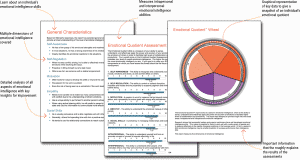
If you’re a business, we can also provide group workshops for your employees and facilitate EQ certification programs for your human resources staff.
8. Conclusion
Emotional Intelligence is King
Emotional intelligence is at the core of all people. It’s one of the most contributory factors of a person’s success and happiness in life, and has the power to catalyze amazing relationships and career opportunities.
Whether or not you invest into professional EQ training and development, you owe it to yourself to at least pick up a few books on the subject. It’s simply too important to ignore – it can and will give you a decisive edge. Moreover, the world becomes a better, happier, more collaborative, and more productive place every time someone increases their EQ.
“Yeah, yeah… I still don’t buy it!”
Some people still don’t “buy” the idea emotions govern their lives. This might be you or someone you know. They don’t believe that understanding and effectively managing their feelings, and those of others, is important for business or personal success.
Perhaps, many of these people are men holding onto the old reticent, stoic ideal of masculinity, as suggested in this New York Times article:
“There are many groups in society who have lost an empire but not yet found a role. Men are the largest of those groups. The traditional masculine ideal isn’t working anymore… This is an economy that rewards emotional connection and verbal expressiveness. Everywhere you see men imprisoned by the old reticent, stoic ideal.”
This is discussed briefly in Mayer, Caruso, and Salovey’s research paper, Emotional Intelligence Meets Traditional Standards for Intelligence (referenced above). They point out how especially in western culture, there has sometimes been a “widespread negative view of people who think emotionally.”
Men or not – we all know people, perhaps especially in the business world (where we often see a strong cluster of Individualistic and Utilitarian intrinsic motivators, along with a healthy dose of Dominant behavioral traits), who associate “feelings” with people who are “overly emotional.”
(Certainly not everyone with the aforementioned traits views emotion negatively. In fact, I can readily think of several people with very high EQ who also possess these listed traits. However, these traits do often coincide with the “old school” norm of reticent, stoic leadership that so often sweeps EQ under the rug.)
Such people may view “feelings” as a sign of weakness, or point out how people are “swayed by emotions” and “think with their hearts instead of their heads.”
The great irony here is that these folks are actually supporting the case for emotional intelligence, by voicing concern over the outcomes that result from low EQ, as it is defined.
You see, the naysayers aren’t wrong at all – they are actually quite right in their observations, and if I may: their feelings about the matter are quite valid. All of these negative things can, and do, happen when people are lacking in their emotional development.
Where many of the naysayers miss the mark, then, is by failing to identify the root cause of their concerns as a function of EQ. With proper awareness and recognition of the issues, EQ assessments, tools, and training programs can be implemented to correct them – once and for all.
Still not convinced? That’s okay, you have every right to your perceptions, impressions, and beliefs.
You might want to ask yourself, though, à la Thinking, Fast and Slow, if your instant impressions are getting the better of you. Is it possible that your rational brain (neocortex, System 2) is “trusting” the story fed to it by your emotional brain (limbic system, System 1) – without a full consideration of the facts?
After a careful review of the research, we believe the case for emotional intelligence is quite bulletproof – and it grows stronger with every new study. To ignore the facts is to lose out on very exciting, very powerful opportunities for advancement.
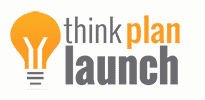
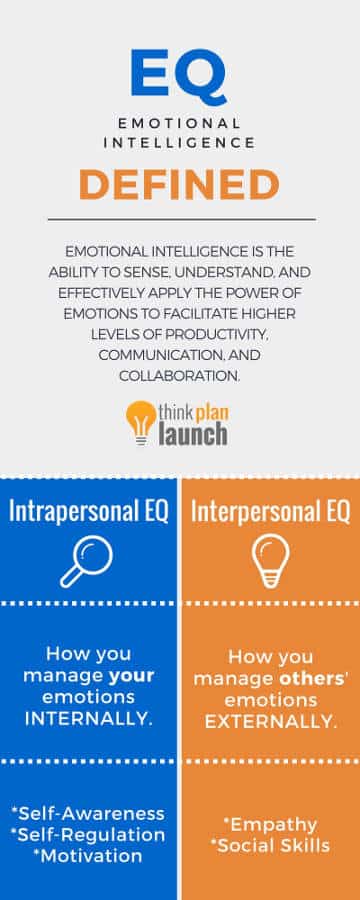


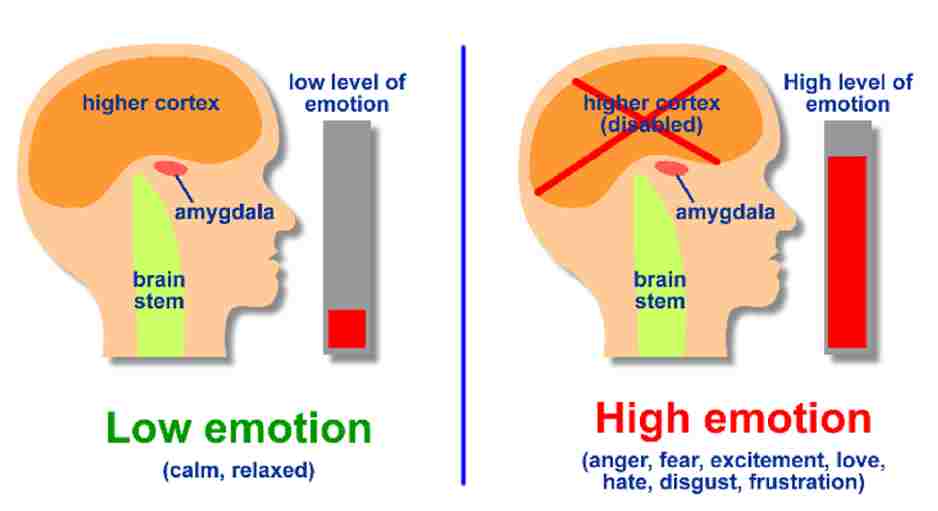


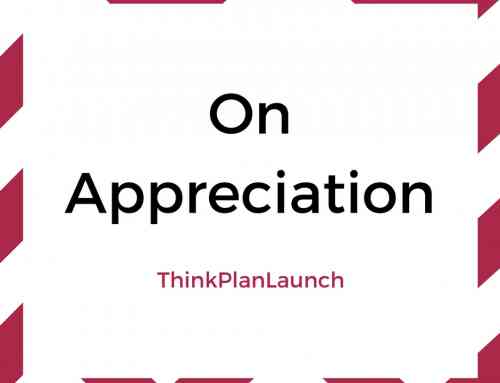

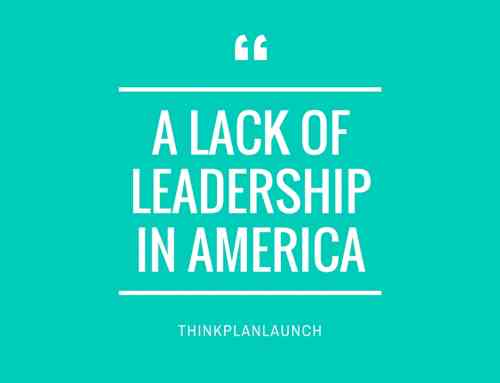
Emotional Intelligence (EQ) has emerged as major job skill which many companies are looking for in their employees while hiring rather than IQ. According to a research people with low EQ doesn’t realize what important skills they lack. The people with high EQ are emotionally strong and work while keeping their emotions aside. There are many benefits of working with people high EQ rather than with low EQ, as people people with high EQ can handle pressure in a healthy way, understand to cooperate with others, are the good listeners, are Empathic, set examples for others to follow, make more thoughtful and thorough decision. Working with people with less EQ is generally less rewarding sometimes becomes difficult to work with them. Here are some recommendations from fellow consultant Alan Gavornik:
• Being Gentle. People with low EQ are generally grumpier and generally respond in an unpleasant manner. One has to act as stabilizing and calming agent rather than ostracizing them which will prove physiological taxing , not just for others but the low EQ individuals themselves.
• Being Explicit. People with Low EQ has less capacity of decoding others, they are more like stereotypical engineer or professor: disinterested in nonverbal communication, non-empathetic, and somewhat detached from interpersonal contact; happiest when on their own or interacting with their own thoughts rather than people. One should avoid social subtleties while interacting with them to avoid getting misunderstood.
• Being rationale. People with Low EQ behave in a irrational ways. One has to try to gain their trust by being the voice of reason and developing a reputation for being logical rather than manipulating them emotionally.
• Do not get offended. People with low EQ have low sympathy with others that is the reason that they are generally politically incorrect. They generally lack conventional etiquettes, one has to find way of dealing with them and letting them know the way dealing with you.
We should be aware of the important points in this article about emotional intelligence. Thanks for sharing this great article.